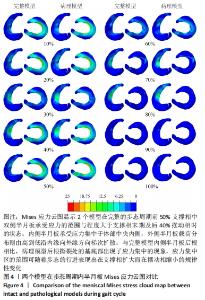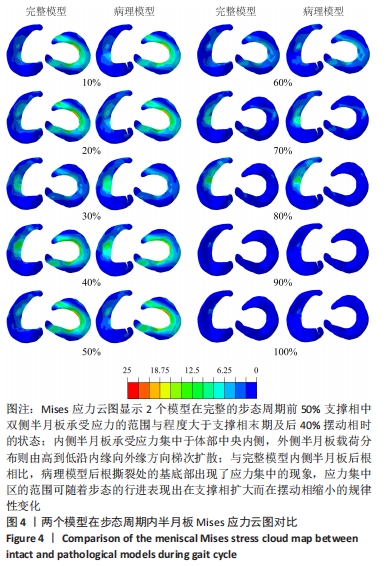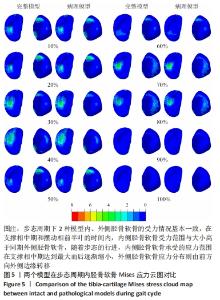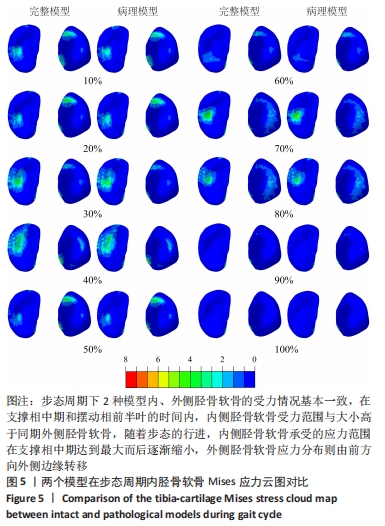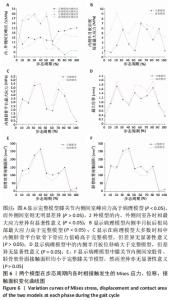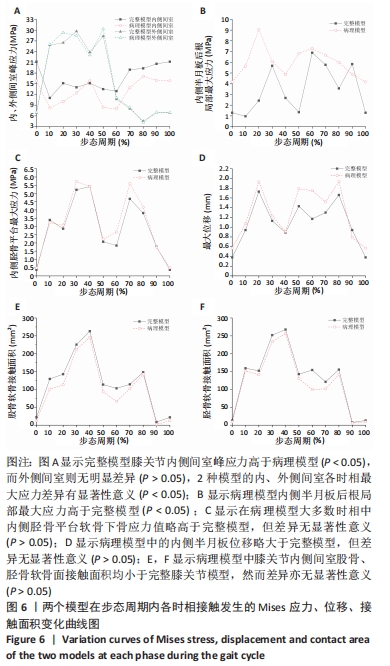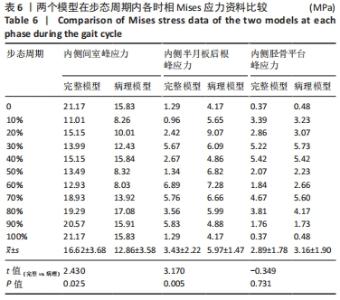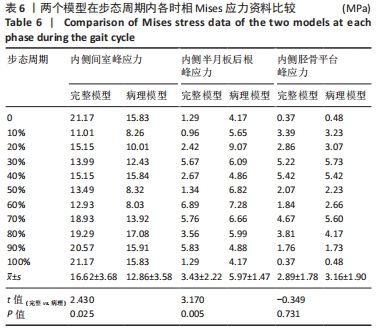[1] BANSAL S, FLOYD ER, KOWALSKI MA, et al. Meniscal repair: The current state and recent advances in augmentation. J Orthop Res. 2021;39(7):1368-1382.
[2] WANG JY, QI YS, BAO HR, et al. The effects of different repair methods for a posterior root tear of the lateral meniscus on the biomechanics of the knee: a finite element analysis. J Orthop Surg Res. 2021;16(1):296.
[3] JIANG EX, EVERHART JS, ABOULJOUD M, et al. Biomechanical Properties of Posterior Meniscal Root Repairs: A Systematic Review. Arthroscopy. 2019;35(7): 2189-2206.e2.
[4] LAPRADE RF, HO CP, JAMES E, et al. Diagnostic accuracy of 3.0 T magnetic resonance imaging for the detection of meniscus posterior root pathology. Knee Surg Sports Traumatol Arthrosc. 2015;23(1):152-157.
[5] 苏家荣,孙铁铮.内侧半月板后根撕裂研究进展[J].中国运动医学杂志,2021, 40(9):721-728.
[6] 傅德杰,杨柳,郭林.半月板损伤与下肢力线[J].中国矫形外科杂志,2021, 29(4):330-333.
[7] KRYCH AJ, LAPRADE MD, HEVESI M, et al. Investigating the Chronology of Meniscus Root Tears: Do Medial Meniscus Posterior Root Tears Cause Extrusion or the Other Way Around? Orthop J Sports Med. 2020;8(11):2325967120961368.
[8] FLOYD ER, RODRIGUEZ AN, FALAAS KL, et al. The Natural History of Medial Meniscal Root Tears: A Biomechanical and Clinical Case Perspective. Front Bioeng Biotechnol. 2021;9:744065.
[9] LAPRADE CM, FOAD A, SMITH SD, et al. Biomechanical consequences of a nonanatomic posterior medial meniscal root repair. Am J Sports Med. 2015;43(4): 912-920.
[10] KIM JY, BIN SI, KIM JM, et al. Tear gap and severity of osteoarthritis are associated with meniscal extrusion in degenerative medial meniscus posterior root tears. Orthop Traumatol Surg Res. 2019;105(7):1395-1399.
[11] KRYCH AJ, HEVESI M, LELAND DP, et al. Meniscal Root Injuries. J Am Acad Orthop Surg. 2020;28(12):491-499.
[12] 唐保明,李钊伟,杨爱荣,等.内外侧半月板后根部损伤有限元力学研究[J].中国矫形外科杂志,2019,27(22):2075-2079.
[13] 江佩师,陈志伟,崔俊成,等.内侧半月板后角损伤有限元仿真模型构建[J].中南医学科学杂志,2018,46(5):452-456.
[14] 包呼日查.内、外侧半月板后根部完全撕裂对膝关节生物力学影响的有限元分析[D].长春:吉林大学,2013.
[15] DING K, YANG W, WANG H, et al. Finite element analysis of biomechanical effects of residual varus/valgus malunion after femoral fracture on knee joint. Int Orthop. 2021;45(7):1827-1835.
[16] ZHANG K, LI L, YANG L, et al. The biomechanical changes of load distribution with longitudinal tears of meniscal horns on knee joint: a finite element analysis. J Orthop Surg Res. 2019;14(1):237.
[17] 李钟鑫,刘璐,高丽兰,等.人体全膝关节精细有限元模型建立及有效性验证[J].生物医学工程与临床,2020,24(5):501-507.
[18] 王琛,张淞瑞,黄龙鳌,等.膝关节三维有限元模型的建立及腓骨截骨治疗骨关节炎机制[J].中华实验外科杂志,2021,38(6):1169-1173.
[19] ISO, ISO 14243-3: 2014, Implants for Surgery-Wear of Total Knee-Joint Prostheses, Loading and Displacement Parameters for Wear-Testing Machines with Displacement Control and Corresponding Environmental Conditions for Test, International Organization Environmental Standardization. London. UK.2014.
[20] ZHANG K, LI L, YANG L, et al. Effect of degenerative and radial tears of the meniscus and resultant meniscectomy on the knee joint: a finite element analysis. J Orthop Translat. 2019;18:20-31.
[21] KIM YM, JOO YB, LEE WY, et al. Remodified Mason-Allen suture technique concomitant with high tibial osteotomy for medial meniscus posterior root tears improved the healing of the repaired root and suppressed osteoarthritis progression. Knee Surg Sports Traumatol Arthrosc. 2021;29(4):1258-1268.
[22] PRAZ C, VIEIRA TD, SAITHNA A, et al. Risk Factors for Lateral Meniscus Posterior Root Tears in the Anterior Cruciate Ligament-Injured Knee: An Epidemiological Analysis of 3956 Patients From the SANTI Study Group. Am J Sports Med. 2019; 47(3):598-605.
[23] WILLINGER L, LANG JJ, VON DEIMLING C, et al. Varus alignment increases medial meniscus extrusion and peak contact pressure: a biomechanical study. Knee Surg Sports Traumatol Arthrosc. 2020;28(4):1092-1098.
[24] HARNER CD, MAURO CS, LESNIAK BP, et al. Biomechanical consequences of a tear of the posterior root of the medial meniscus. Surgical technique. J Bone Joint Surg Am. 2009;91 Suppl 2:257-270.
[25] PADALECKI JR, JANSSON KS, SMITH SD, et al. Biomechanical consequences of a complete radial tear adjacent to the medial meniscus posterior root attachment site: in situ pull-out repair restores derangement of joint mechanics. Am J Sports Med. 2014;42(3):699-707.
[26] GUESS TM, RAZU S, JAHANDAR H, et al. Predicted loading on the menisci during gait: The effect of horn laxity. J Biomech. 2015;48(8):1490-1498.
[27] JEON SW, JUNG M, CHOI CH, et al. Factors Related to Meniscal Extrusion and Cartilage Lesions in Medial Meniscus Root Tears. J Knee Surg. 2021;34(2):178-186.
[28] SVENSSON F, FELSON DT, ZHANG F, et al. Meniscal body extrusion and cartilage coverage in middle-aged and elderly without radiographic knee osteoarthritis. Eur Radio. 2019;29(4):1848-1854.
[29] 姚禹,钱军.半月板外突病因的研究进展[J].中华骨与关节外科杂志,2021, 14(5):432-436.
[30] YAMAGAMI R, TAKETOMI S, INUI H, et al. The role of medial meniscus posterior root tear and proximal tibial morphology in the development of spontaneous osteonecrosis and osteoarthritis of the knee. Knee. 2017;24(2):390-395.
[31] HASHIMOTO S, TERAUCHI M, HATAYAMA K, et al. Medial meniscus extrusion as a predictor for a poor prognosis in patients with spontaneous osteonecrosis of the knee. Knee. 2021;31:164-171.
[32] FROST HM. A 2003 update of bone physiology and Wolff’s Law for clinicians. Angle Orthod. 2004;74(1):13-15.
[33] HUSSAIN ZB, CHAHLA J, MANDELBAUM BR, et al. The Role of Meniscal Tears in Spontaneous Osteonecrosis of the Knee: A Systematic Review of Suspected Etiology and a Call to Revisit Nomenclature. Am J Sports Med. 2019;47(2):501-507.
[34] SIBILSKA A, GÓRALCZYK A, HERMANOWICZ K, et al. Spontaneous osteonecrosis of the knee: what do we know so far? A literature review. Int Orthop. 2020;44(6): 1063-1069.
[35] PAREEK A, PARKES CW, BERNARD C, et al. Spontaneous Osteonecrosis/Subchondral Insufficiency Fractures of the Knee: High Rates of Conversion to Surgical Treatment and Arthroplasty. J Bone Joint Surg Am. 2020;102(9):821-829.
|
